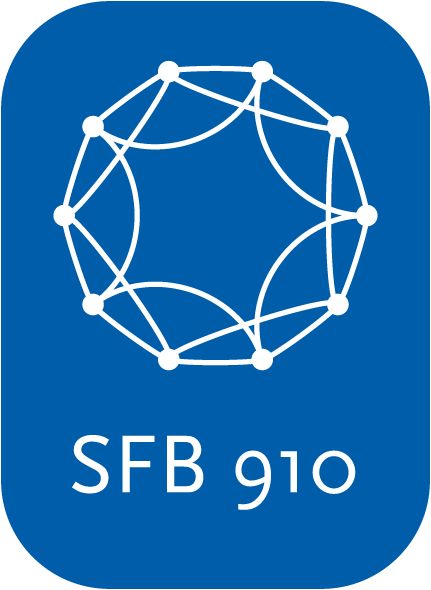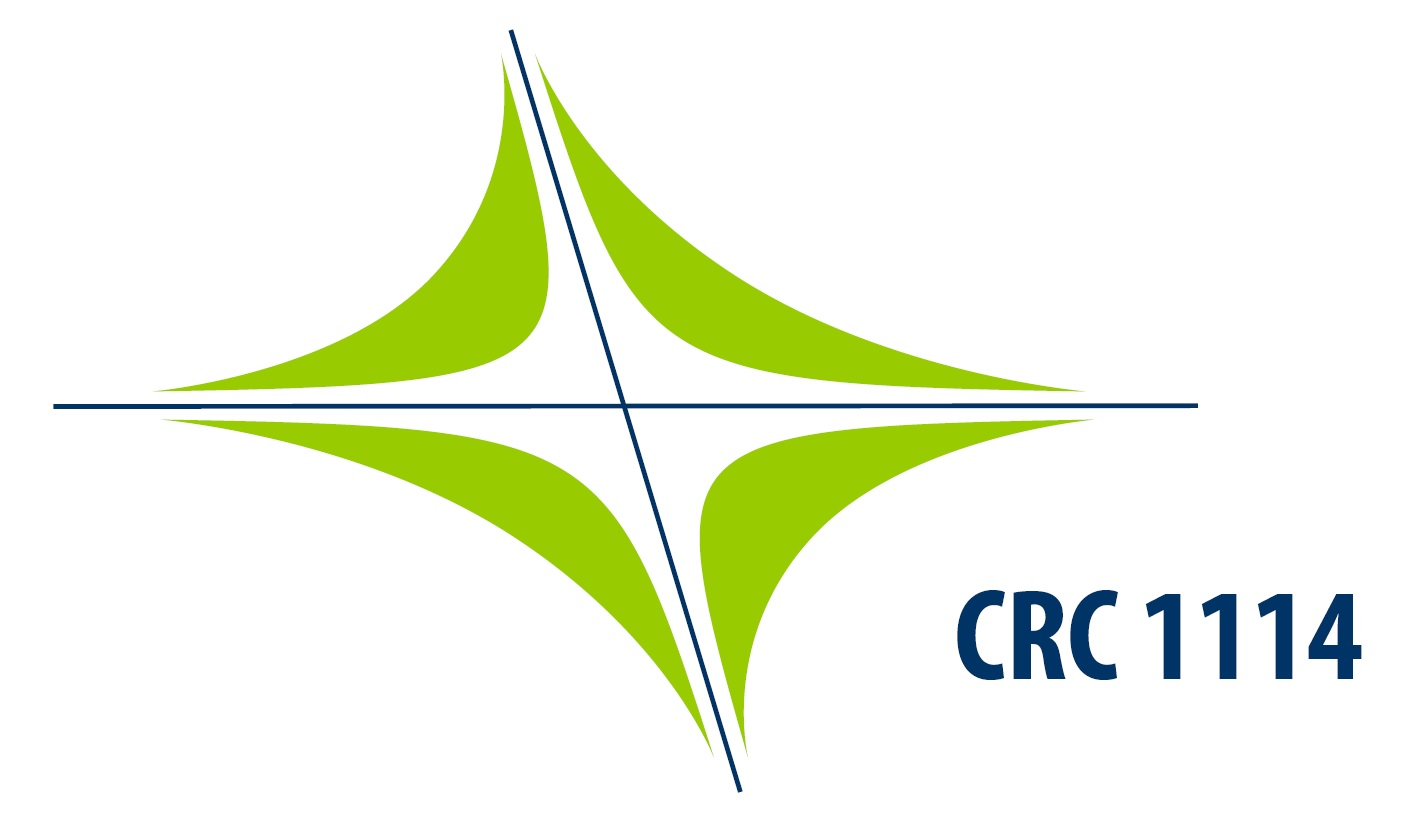-
Patrizia Donato Université de Rouen
We present here some recent homogenization results obtained in collaboration with O. Guibé (Université de Rouen) and A. Oropeza (University of the Philippines Diliman). They concern the homogenization of a class of quasilinear elliptic problems in a periodically perforated domain $\Omega_{\varepsilon}$, with $L^1$ data and nonlinear Robin conditions on the boundary of the holes. Since we deal with $L^1$ data, we cannot have solutions in $H^{1}(\Omega_{\varepsilon})$. Therefore, we use here the convenient notion of renormalized solutions. For the homogenization, we use the Periodic Unfolding Method but we can only apply it to the truncated solutions, which are in $H^{1}(\Omega_{\varepsilon})$. Hence, as a main difficulty, we have to carefully describe the limits of the truncated unfolded solutions and of their gradients. This allow us to prove that we obtain at the limit, an unfolded renormalized problem, as well as a homogenized problem in $\Omega$.Homogenization of quasilinear elliptic problems with nonlinear Robin conditions and $L^1$ data
-
Antoine Gloria Université Pierre et Marie Curie (UPMC) Paris 6
The homogenization commutator and the pathwise structure of fluctuations
In this talk I will introduce the notion of homogenization commutator. The fluctuations at large scales of this stationary field characterize in a pathwise sense the fluctuations at large scales of standard quantities like the flux and the gradient of the corrector, and of the solution operator. In the first part of the talk, I will address this pathwise structure in two typical settings: Gaussian coefficients with integrable correlations and Gaussian coefficients with non-integrable correlations. In the second part of the talk, I will describe the large scale fluctuations of the homogenization commutator: White noise for integrable correlations, and fractional white noise for non-integrable correlations. This is based on joint works with M. Duerinckx, J. Fischer, S. Neukamm, and F. Otto.Georges Griso Université Pierre et Marie Curie (UPMC) Paris 6
Let $\Omega_{\delta}=\omega\times(-\delta,\delta)$ be a plate whose thickness is $2\delta$ and mid-surface$\omega$ a bounded domain in $\mathbb R^2$ with Lipschitz boundary. Our aim is to give the asymptotic behavior of the following problem depending of two small parameters $\epsilon$ and $\delta$:Homogenization of a thin elastic plate
Find $ u_{\epsilon,\delta}$ in $\mathbf H_{\Gamma_{0,\delta}}(\Omega_\delta)\doteq\big\{ v\in H^1(\Omega_\delta;\mathbb R^3)$ so that $ v=0$ on $\Gamma_{0,\delta}\doteq \partial \omega\times (-\delta,\delta)\big\}$, satisfying
$ \int_{\Omega_\delta} a_{ijkl}\big({x_1\over \epsilon}, {x_2\over \epsilon}, {x_3\over \delta}\big) \gamma_{ij}(u_{\epsilon,\delta})\gamma_{kl}(v)\, dx=\int_{\Omega_\delta} f_{\delta}(x)\, v(x)\, dx$ for all $ v\in {\mathbf H}_{\Gamma_{0,\delta}}(\Omega_\delta) $, where- $a_{ijkl}\in L^\infty \big(Y\times (-1,1)\big)$, $Y\doteq(0,1)^2$ and satisfy the usual conditions,
- $a_{ijkl}$ $Y$-periodic,
- $\gamma_{ij}(v)=\frac12 \Big({\partial v_i\over \partial x_j}+{\partial v_j\over \partial x_i}\Big)$.
- 1: $\epsilon\to 0$ ($\delta$ fixed) then $\delta\to 0$,
- 2: $\delta\to 0$ ($\epsilon$ fixed) then $\epsilon\to 0$,
- 3: $(\epsilon,\delta)\to (0,0)$ and $ \lim_{(\epsilon,\delta)\to (0,0)}{\epsilon/ \delta}=\theta\in [0,+\infty]$.
Ralf Kornhuber Free University Berlin
Numerical homogenization tries to approximate the solution of partial differential equations with dominating fine-scale structures by functions from modified finite element spaces. Utilizing the framework of subspace decomposition, we present and analyze a class of new methods for elliptic problems with strongly oscillating coefficients that is closely related to the approach of Malqvist and Peterseim [Math. Comp. 83, 2014] together with corresponding iterative counterparts. As a first step towards numerical homogenization of multiscale fault networks with rate and state dependent friction, we then discuss extensions of our approach to elliptic problems with linear transmission conditions on multiscale networks of interfaces. Our findings are illustrated by numerical computations. This is joint work with Joscha Podlesny und Harry Yserentant.Towards numerical homogenization of multiscale fault networks
Agnes Lamacz Technical University Dortmund
Effective Maxwell's equations in a geometry with flat split-rings and wires
Propagation of light in heterogeneous media is a complex subject of research. It has received renewed interest in recent years, since technical progress allows for smaller devices and offers new possibilities. At the same time, theoretical ideas inspired further research. Key research areas are photonic crystals, negative index metamaterials, perfect imaging, and cloaking. The mathematical analysis of negative index materials, which we want to focus on in this talk, is connected to a study of singular limits in Maxwell's equations. We present a result on homogenization of the time harmonic Maxwell's equations in a complex geometry. The homogenization process is performed in the case that many (order $\eta^{-3}$) small (order $\eta^1$), flat (order $\eta^2$) and highly conductive (order $\eta^{-3}$) metallic split-rings are distributed in a domain $\Omega\subset \mathbb{R}^3$. We determine the effective behavior of this metamaterial in the limit $\eta\searrow 0$. For $\eta>0$, each single conductor occupies a simply connected domain, but the conductor closes to a ring in the limit $\eta\searrow 0$. This change of topology allows for an extra dimension in the solution space of the corresponding cell-problem. Even though both original materials (metal and void) have the same positive magnetic permeability $\mu_0>0$, we show that the effective Maxwell system exhibits, depending on the frequency, a negative magnetic response. Furthermore, we demonstrate that combining the split-ring array with thin, highly conducting wires can effectively provide a negative index metamaterial.Claude Le Bris CERMICS Ecole Nationale des Ponts et Chaussées,
We overview a series of joint works with Xavier Blanc (Université Paris Diderot), Pierre-Louis Lions (Collége de France), and also Marc Josien (Ecole des Ponts), about homogenization theory for elliptic equations in the presence of defects that break, typically, the periodicity of the coefficients. We show that, under appropriate assumptions, the quality of the approximation and the rates of convergence of periodic homogenization are preserved. We address both equations in divergence form and equations not in divergence form, such as in particular advection-diffusion equations. A comparison is made with equations different in nature, such as Hamilton-Jacobi equations (joint works with Pierre Cardaliaguet (Université Paris Dauphine) and Panagiotis Souganidis (University of Chicago).Homogenization in the presence of defects
Maria Neuss-Radu Friedrich-Alexander-Universität Erlangen-Nürnberg
In this presentation, we develop multiscale methods for the derivation and analysis of effective models in environments containing membranes. At the microscopic level, where membranes are modeled as thin heterogeneous layers, the model consists of nonlinear reaction-diffusion equations within each subdomain. At the macroscopic level, membranes are reduced to interfaces, and effective transmission conditions and/or effective equations at these interfaces are derived. It turns out that the form of the effective laws at the interface depends on the scaling of the microscopic system as well as of the type of microscopic transmission conditions imposed at the bulk-layer interface. For the derivation of macroscopic (effective) models, we first generalize the concept of weak and strong two-scale convergence to flat membranes with periodic structure. This allows to derive cell-problems, which approximate at zeroth order the processes in the membrane. For the derivation of effective transmission conditions at the interfaces, we define test-functions of boundary-layer type, adapted to dimension reduction. In case of curved membranes, we introduce the notion of locally periodic functions on manifolds and thin layers. Furthermore, we define the notion of two-scale convergence with respect to charts. Parts of the presented results are obtained jointly with Markus Gahn (Heidelberg), Willi Jäger (Heidelberg), and Peter Knabner (Erlangen).Mathematical modeling and multiscale analysis of transport processes through membranes
Thomas Niedermayer Physikalisch Technische Bundesanstalt (PTB) Berlin
The coupling of stochastic growth and shrinkage of one-dimensional structures to random aging of the constituting subunits defines a stochastic process which captures the essential features of the nonequilibrium assembly of cytoskeletal filaments. Because of correlations, previously employed mean-field methods fail to correctly describe effective macroscopic properties such as filament growth. We study an alternative formulation of the full master equation of the process. An ansatz for the steady-state solution leads to a recursion relation which allows for the calculation of all emergent quantities with increasing accuracy and in excellent agreement with stochastic simulations. In particular, we compute the force-velocity relation and the stall force, i.e. the pushing force at which filament growth vanishes. It turns out this force is much smaller than previously calculated from mean-field equations.Macroscopic properties of a simple stochastic process with aging: Recursive solution
Daniel Peterseim Universität Augsburg
This talk aims to bridge existing theories in numerical and analytical homogenization. For this purpose, the localized orthogonal decomposition method, which can be linked to subspace correction techniques, is reinterpreted by means of a discrete integral operator acting on standard finite element spaces. The exponential decay of the involved integral kernel motivates the use of a diagonal approximation which leads to a piecewise constant effective coefficient. In a periodic setting, this computable effective coefficient is proved to coincide with the classical homogenization limit. An a priori error analysis shows that the corresponding effective numerical model is appropriate beyond the periodic setting whenever the computed effective coefficient satisfies a certain homogenization criterion, which can be verified a posteriori. The new representation of the numerical homogenization method turns out to be particularly attractive for computational stochastic homogenization.Numerical homogenization by localized orthogonal decomposition and connections to the mathematical theory of homogenization




